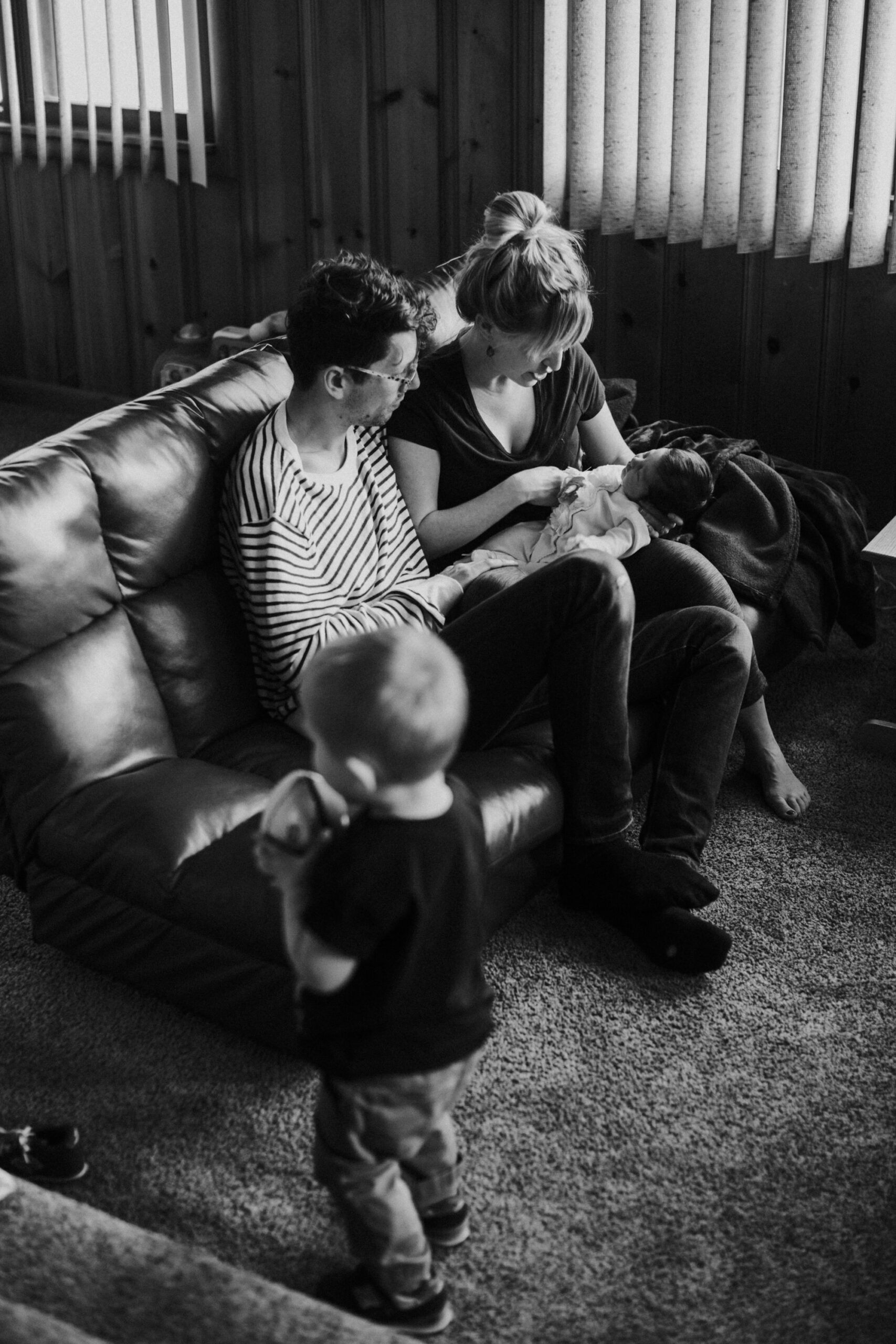Picture the challenge: you want the best for your child, but balancing responsibilities, emotions, and everyday setbacks with your co-parent can seem like tiptoeing through a minefield—sometimes exhilarating, often exhausting. Concerns swirl: Will our child feel secure splitting time between homes? How do we keep routines stable? What about those moments when exhaustion (or frustration) takes center stage? Co-parenting invites you to embrace shared custody, foster parental collaboration, and focus directly on your child’s physical and emotional needs—all while maintaining a respectful partnership, regardless of feelings past or present. Let’s unravel the science and the wisdom behind co-parenting, from practical sleep management hacks to medically informed approaches for child resilience. Ready to transform family dynamics? Step in as we examine communication, flexibility, and evidence-based tips for modern parents like you.
The Essence of Co-parenting: Why It Matters
At its core, co parenting is a framework anchored in collaborative parenting. Two, sometimes more, adults make joint decisions—healthcare, education, emotional support—regardless of their personal relationship status. Medical research shows that children fare better mentally and behaviorally when caregivers prioritize respectful dialogue and synchronized routines. The stability generated by consistent caregiving reduces children’s stress hormones (notably cortisol, linked with anxiety), laying the groundwork for better sleep, improved learning, and positive social interactions. For parents, embracing cooperative parenting models often eases psychological load and enhances problem-solving capacity—benefits substantiated across pediatric, developmental, and family psychology literature.
Transitioning from Couplehood to Co-parents
The leap into parenthood isn’t always gentle. Romantic partners morph into parenting partners, shifting identities almost overnight. Before a baby’s arrival, many parents operate with unconscious agreements—who cooks, who soothes the baby, how is affection expressed? Once the baby arrives, fatigue and new routines challenge these unspoken contracts. Medical and developmental experts consistently highlight the need to keep the parental relationship visible, even as devotion to the child’s needs eclipses previous couple rituals.
- Couples must reframe their equations: Not simply a duo, but three entities—Parent 1, Parent 2, and the relationship.
- Deprived of quality time, many couples find their emotional bandwidth fragile. Regular, honest communication (even brief rituals: hugs, discussions, shared routines) offers measurable protection against stress-induced conflict, dampening inflammation markers such as interleukin-6—an oft-cited consequence in chronic stress studies.
Understanding Co-parenting in Practice
So, what makes co parenting distinct in daily life? Each decision—from medical visits to bedtime—becomes a shared endeavor. Respect, clear communication, and flexibility form a tripod of effective co-parenting, supporting consistent habits across households. Pediatric guidelines underpin this need for reliability; erratic schedules and clashing rules increase children’s risk for emotional dysregulation, attachment concerns, and even sleep disorders.
Key element: Co-parenting is an active process that requires intentional effort and regular review—not a static agreement. Every new school year or developmental milestone warrants fresh conversations.
Co-parenting Versus Joint Custody: Parsing the Distinction
Is joint custody synonymous with co parenting? Far from it. Joint custody is a legal standing—who retains decision-making rights, how time is allocated. Co-parenting, in contrast, arises from sustained shared decision-making and genuine collaboration. It’s possible to share custody “on paper” yet lack the supportive, communicative partnership that research unmistakably links to healthier children. The true yardstick for success remains day-to-day parental cooperation.
The Spectrum of Co-parenting: Models and Outcomes
Let’s delve into the medical and developmental implications of different arrangements:
- Cooperative co-parenting: The gold standard. Frequent communication, mutual support, and shared routines are correlated with optimal academic, behavioral, and emotional results.
- Parallel co-parenting: Parents operate independently, sharing little information. Sometimes necessary in high-conflict situations, but fragmented routines can challenge a child’s adaptability.
- Conflicted co-parenting: Chronic disputes and antagonism, exposing children to pro-inflammatory stress, heighten risks for disorders like anxiety and behavioral difficulty.
Research demonstrates: highly cooperative parenting teams minimize conflict exposure—crucial, as sustained conflict in family environments increases both pediatric mental health risks and parental burnout rates.
Evolution of Co-parenting: From Tradition to Diversity
Historically confined to nuclear, heterosexual couples, co parenting now describes a rich variety of arrangements: blended families, same-sex parenting, extended family involvement (grandparents), and even platonic parental partnerships. Pediatric consensus affirms what families have long suspected—children thrive on warmth, predictability, and emotional support, regardless of family constellation. Societal shifts, changing laws, and broader definitions of parenthood prompt ongoing adaptation.
- Medical evidence confirms: children’s outcomes—physical and psychological—are tethered not to family structure but to stability and parent cooperation.
Balancing Couplehood and Parenthood: Strategies for Resilience
You might ask, “Can our relationship survive the sleepless nights and relentless to-do lists?” The answer, supported by clinical psychology, lies in adaptation and creative planning.
Sleeping Well—Together and Apart
- Assess personal sleep patterns and their impact on mood. Sleep deprivation disrupts cognitive functioning and increases irritability—scientifically documented and universally felt.
- Share nighttime responsibilities. If breastfeeding, explore staggered naps or enlisting outside help for other household duties.
- Recognize signals of parental burnout: chronic fatigue, irritability, detachment. Seek support—counseling, healthcare advice—to address early warning signs.
Protecting Time for Each Other
- Commit to micro-moments: a shared coffee, an evening debrief minus the screens, a walk. These small investments nurture oxytocin release, a hormone fostering attachment and trust.
- Don’t hesitate to mobilize support networks. Trusted friends or family, even a well-chosen babysitter, can be lifelines.
- Agree on “check-in” signals—a word, gesture, or message that means “I need help” or “We’re drifting.” Acting before frustration peaks protects everyone.
Communication: The Unseen Pillar of Co-parenting
- Speak from personal needs, not accusations. Saying “I feel overwhelmed when bedtime is chaotic” invites collaboration.
- Routine “date nights” can be as simple as a living room picnic—what matters is intentional togetherness.
- Simple rituals—removing phones from the bedroom, synchronized bedtimes, or the “emotional weather report” (assign a mood with a sun/cloud symbol)—keep emotional climate clear.
- If words fail, professional input from a couple’s therapist or parenting specialist can be transformative.
Benefits of Successful Co-parenting
Enhanced Child Well-being
Children immersed in emotionally predictable, caring environments (the hallmark of positive co-parenting) exhibit lower rates of stress-induced illnesses, better sleep hygiene, and buouyant self-esteem. Medical reviews routinely link synchronized routines with higher resilience, fewer behavioral disturbances, and robust social skills.
Parental Empowerment
Sharing decision-making fortifies confidence and reduces overwhelm or isolation—particularly important in the postpartum period, where vulnerability peaks. Cooperative parenting allows each caregiver to decompress, lowering the risk for parental depression and improving family well-being overall.
Family Harmony and Social Integration
Children model what they witness. Regular exposure to respectful conflict resolution, cooperative problem-solving, and the maintenance of healthy boundaries arms them with invaluable relational tools for life beyond home.
Core Principles for Effective Co-parenting
Communication, Consistency, Stability
Keep conversations regular, child-focused, and future-oriented. A shared calendar, mutually agreed discipline strategies, and uniform bedtime routines lend tangible structure.
Flexibility and Adaptation
Needs change—quickly. Openness to revising agreements, adjusting custody schedules, or responding to developmental changes poises families to absorb challenges rather than fracture over them.
Respect and Boundaries
Discussions remain courteous and focused on shared parental goals. Personal issues and historical conflicts are left aside during parenting communication.
Overcoming Typical Co-parenting Obstacles
- Communication breakdowns may reignite old hurts; using structured tools (texts, shared apps, brief messages) minimizes misfires.
- Parenting style differences—from discipline to media exposure—should be discussed transparently to preserve routine.
- New partners and blended families introduce new variables. Maintaining open, respectful dialogue with all caregivers preserves security for the child.
- Logistical hurdles—rotating between homes, managing extracurriculars—call for shared planning (digital calendars are invaluable).
- Legal or financial matters often require documentation and, sometimes, professional mediation for clarity and safety.
Designing a Co-parenting Plan That Works
Medical and legal specialists consistently recommend a written plan. This blueprint clarifies who’s responsible for which aspects—health appointments, school pickups, holidays—reducing future friction.
- Agreements should cover both routine matters (bedtimes, meals) and one-off events (holidays, birthdays, school plays).
- Health, education, and even screen-time policies should be specified. The more comprehensive, the more predictable and safe the environment for the child.
- As families—and needs—evolve, revisit the plan regularly, ensuring it grows with the child.
Communication and Conflict Resolution in Co-parenting
- Prefer apps like OurFamilyWizard or AppClose for written communication and shared scheduling.
- Boundaries are essential: all conversations focus on the child; no late-night calls unless urgent; children never act as messengers or referees.
- Calm, solution-focused language defuses rising conflict. If tension escalates, “pause and return.” Document key agreements to avoid memory tricks.
- For entrenched disputes, professional mediation or family therapy often unlocks productive paths.
Navigating Co-parenting’s Rougher Waters
- Shield children from visible conflict. Chronic exposure to parental anger has documented effects on the nervous system and lifelong emotional patterning.
- Long-distance co parenting? Emphasize regular digital contact and plan for extended visits. When special needs are in play, detailed coordination with healthcare teams and therapists is non-negotiable.
- If safety, well-being, or rights are at risk, pause: medical, legal, or advocacy professionals must intervene.
Supporting and Empowering Your Child Through Co-parenting
- Prepare your child for handovers—rituals (packing a favorite toy, planning a transition treat) anchor them emotionally.
- Reinforce bonds with both parents: openly acknowledge positive experiences with the “other” household, affirming your child’s sense of self and belonging.
- Notice signs of strain—withdrawal, sleep changes, irritability—early. Compassionate conversation or, sometimes, therapy can make a world of difference.
- Where age-appropriate, respect your child’s wishes for arrangements; even young children benefit from simple choices and involvement.
Ongoing Co-parenting: Adapting and Thriving
- Life shifts—remarriage, moves, new siblings—necessitate continual recalibration. The healthiest families update their co parenting agreement to reflect these changes openly and proactively.
- As children enter adolescence, maintain balance: offer space, respect privacy, yet communicate openly about structure and boundaries.
- Celebrate milestones, big and small. Shared events—birthdays, graduations—become affirming touchstones, reinforcing stability and unity.
Key Takeaways
- Co parenting unlocks powerful advantages for children, optimizing emotional security and developmental health.
- The heart of effective co-parenting lies in communication, consistency, flexibility, and mutual respect.
- Clearly written agreements and adaptive plans protect against misunderstandings and shift with evolving family needs.
- The journey is not solitary—medical, legal, and mental health resources offer support at every point.
- For parents seeking tailored advice, evidence-based resources, and free child health questionnaires, the Heloa app is designed to empower and inform—not just for the immediate, but for the years ahead.
Embrace the co-parenting path with empathy, structure, and science-based strategies—building families that withstand storms, celebrate joys, and nurture every voice within.
Questions Parents Ask
How can co-parenting work effectively when parents have very different parenting styles?
It’s completely natural for parents to have their own ways of doing things—differences in discipline, routines, or even daily habits are common. The key is to communicate openly and respectfully about each parent’s approach, aiming to find a middle ground. Sometimes, small compromises are enough to support stability for your child while still honoring each parent’s values. If an agreement seems difficult, consider focusing together on routines or principles that are most important for your child’s well-being and sense of security. Remember, even if styles differ, what truly matters is that your child feels loved and supported in both homes.
Are there tools or resources that can make co-parenting smoother?
Absolutely, there’s a growing number of resources designed to support families. Co-parenting apps (such as shared calendars, messaging platforms, or expense trackers) help keep everyone organized and reduce misunderstandings. Some parents find attending co-parenting classes or workshops useful for learning new communication techniques or conflict management skills. Whenever you feel the need, don’t hesitate to reach out for extra guidance—whether through professional mediators, therapists, or supportive online communities. Every family’s journey is unique, and there’s no harm in seeking a little help along the way.
What should I do if I’m feeling overwhelmed or stuck in the co-parenting process?
Feeling overwhelmed is entirely understandable—navigating new routines, emotions, and expectations is no small feat. It’s important to acknowledge your feelings with kindness and not judge yourself. If frustration or fatigue feels constant, pausing to seek support can make a big difference. This might mean speaking with a trusted friend, consulting a professional, or taking a short break when possible. Remember, you don’t have to carry the load alone. Many parents experience these moments, and reaching out—whether through family, professionals, or parent groups—can offer reassurance, new perspectives, and renewed strength.









